Watson's Bay Independent Travel Guide
Getting to Watson's Bay
You can get to Watson's Bay by bus from the city, or ferry from Circular Quay. The ferry is a more scenic way to go and can be quicker too. Parking is a disaster. Take public transport.
By ferry or bus, you'll arrive at Robertson Park in the humble heart of Watson's Bay with Sydney's stunning harbour to the west and the wild Pacific coastline to the east.

Photo: Mark Bowyer Watson's Bay promenade
Macquarie Lighthouse, the Dunbar, the Signal Tower, The Gap
If you want the full Watson's Bay experience, head south from Robertson Park (buses and ferries stop here) towards Macquarie Lighthouse - location of Australia's first lighthouse. Built by Governor Macquarie's convict architect Francis Greenway, 1816 the lighthouse that currently stands on the site was built in the 1880s.
Take the coastal walk north towards The Gap and past the site of the wreck of the Dunbar. The Dunbar smashed on rocks below in 1857 with the loss of 121 lives after 81 days at sea from England. There was one survivor. To this day the Dunbar wreck was the worst maritime accident in Sydney's history.
Continue north towards The Gap. You'll pass the Signal Tower. This observation tower was built in stages from the late 1830s and the 1880s to record and signal back to Sydney the approach of ships to Sydney Harbour.

Photo: Mark Bowyer Macquarie Lighthouse - the site of Australia's first lighthouse.

Photo: Mark Bowyer Walking towards the Signal Tower and The Gap - Watson's Bay
The Gap
Tragically, The Gap has for decades been a place best known for suicides - you'll see lots of installations providing counsel to people at risk.
Look beyond the dark side for rugged coastal views. One of the anchors of the wreck of the Dunbar is also on display at the Gap Lookout.

Photo: Mark Bowyer The Dunbar anchor from the 1857 wreck.
Camp Cove
From The Gap, head north towards Camp Cove. The most picturesque route will take you back to the ferry terminal and along the Watson's Bay waterfront. Continue to Green Point Reserve at the southern tip of Camp Cove.
This is my favourite swimming spot here, but there are many others.
Camp Cove is believed to have been the first place Captain Arthur Phillip landed in Sydney Harbour with his men in January 1778, while surveying the harbour. Arthur Phillip travelled to Sydney Cove in three row boats from Botany Bay, his first point of landing, having decided Botany Bay was unsuitable for his planned penal settlement.
For thousands of years before Phillip, Gadigal First Nations People lived at Camp Cove. The area was the location of one of the first exchanges between First Fleeters and First Nations people. According to the accounts of the time, it was an amicable first contact that deteriorated later as the intentions and methods of the invaders became known.
Green Point at the Southern end of Camp Cove was the location of an anti-submarine boom net built across Sydney Harbour in 1942 to thwart Japanese attack. In the only successful enemy attack in Sydney's post-colonial history, in late May 1942, a sub managed to breach the net and sink a naval ferry killing 21 servicemen.

Photo: Mark Bowyer Camp Cove

Photo: Mark Bowyer Camp Cove
South Head Heritage Trail - Hornby Lighthouse
As you make your way north to South Head along the South Head Heritage Trail, you'll get a stronger sense of the military significance of this area. Sydney Heads provide the only gateway to the city so they've had a strategic significance since the arrival of the British. You'll see remains of gun placements and guns from the area's naval past. And there's still a military base at Watson's Bay.
The views of the coast, the heads and the harbour from South Head are spectacular. The area has become a popular sunset hangout - for good reason.
As you take the short walk to the point, you'll pass a couple of swimming spots, including stunning Lady Bay nude beach.
The red and white striped Hornby Lighthouse was built in 1858 in the wake of the Dunbar tragedy (see above) and continues to mark the South Head gateway to Sydney Harbour.
The most popular spot for sunset views is by the old Lighthouse Keeper's cottage from the same era as the lighthouse.

Photo: Mark Bowyer South Head Heritage Trail

Photo: Mark Bowyer Hornby Lighthouse, old cannon placement, and Sydney Heads

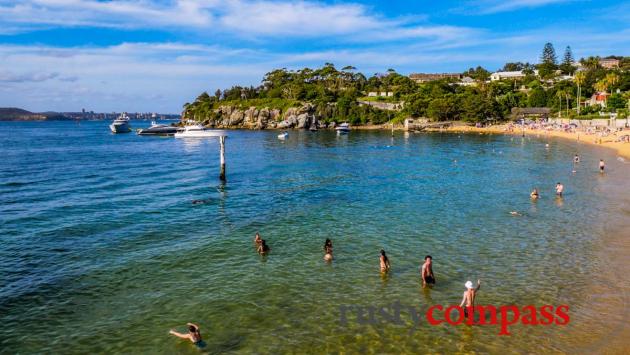
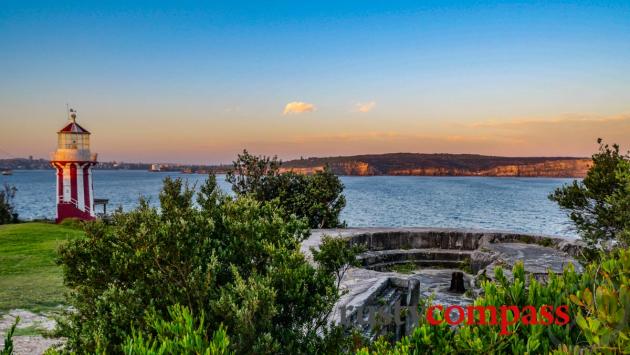
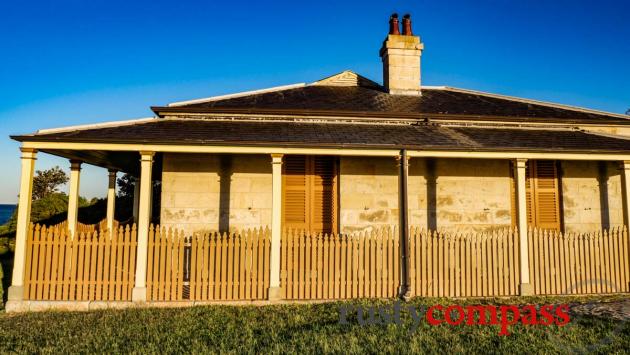
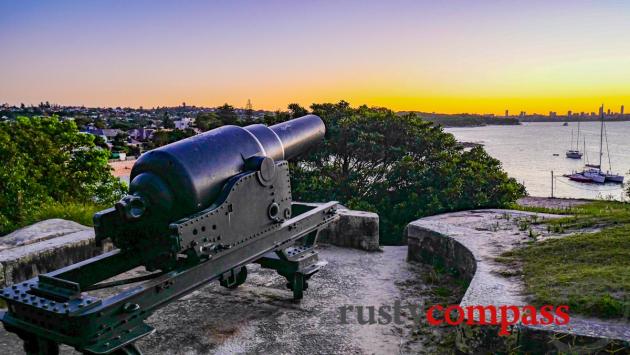
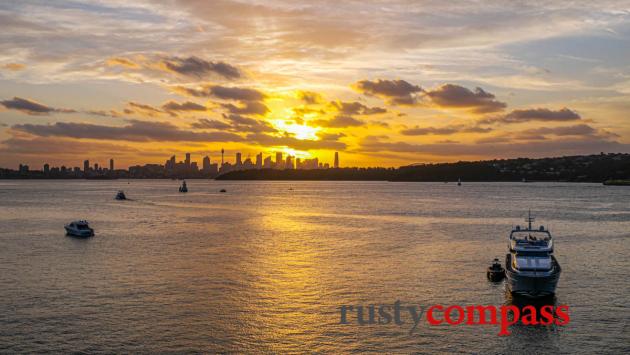
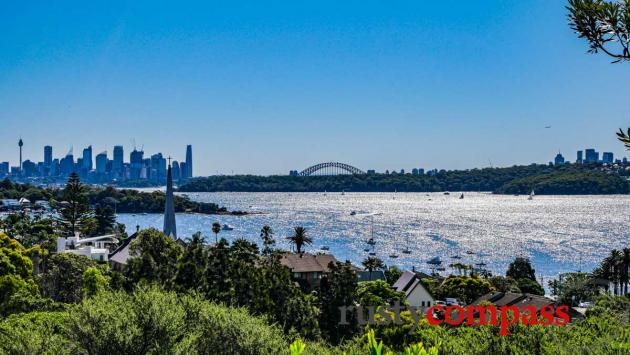





There are no comments yet.